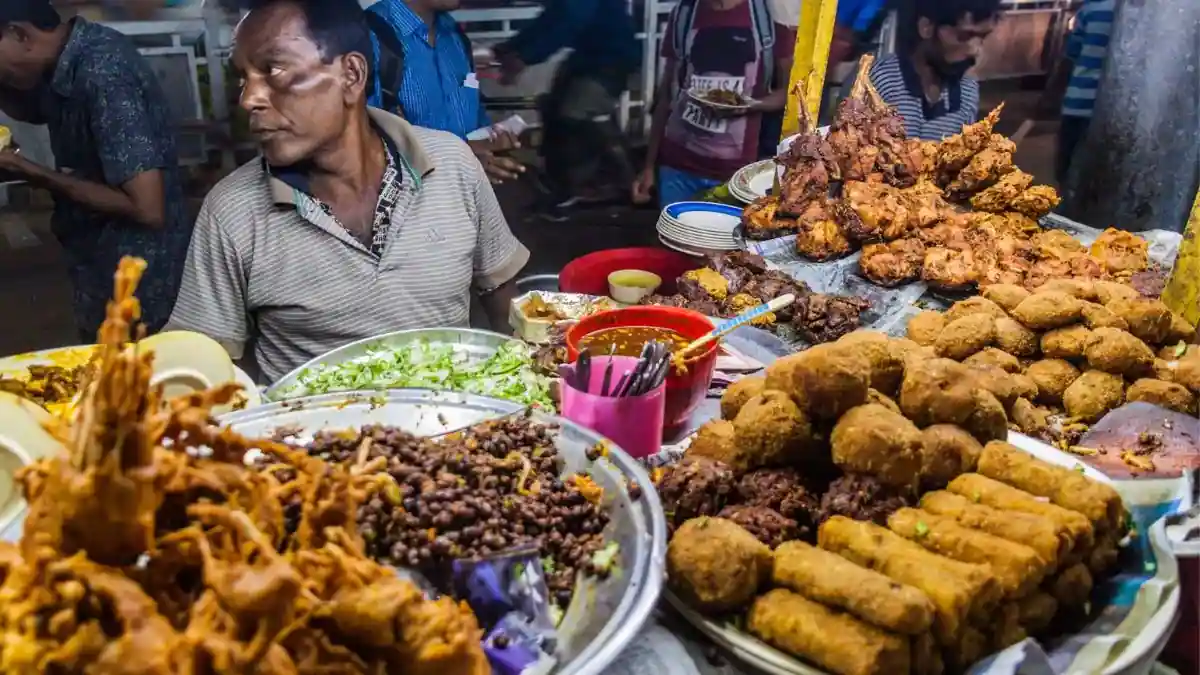Take Me to The Recipes
Bangladesh is a country with a rich and diverse culinary history. Its cuisine is a unique blend of flavors from the Middle East, India, and Southeast Asia. From traditional dishes to modern recipes, Bangladesh food is full of flavor and variety. In this section, we will explore the introduction to Bangladesh food and the unique flavors it has to offer.
Bangladesh is known for its spicy dishes, which are often made with a variety of spices and herbs. Common ingredients include garlic, ginger, cumin, coriander, turmeric, and chili peppers. These ingredients are used to create flavorful curries, stews, and other dishes. Rice is a staple of Bangladeshi cuisine and is often served with a variety of vegetables and meats.
Seafood is also popular in Bangladesh, and is often cooked with a variety of spices and herbs. Fish, shrimp, and other seafood are often cooked in a spicy sauce or curry. Vegetarian dishes are also popular in Bangladesh, and are often made with lentils, beans, and vegetables.
Bangladeshi cuisine also includes a variety of desserts and snacks. These include sweet rice dishes, fried doughnuts, and a variety of sweet and savory pastries. Tea is also a popular beverage in Bangladesh, and is often served with snacks.
Overall, Bangladesh food is full of flavor and variety. From traditional dishes to modern recipes, there is something for everyone to enjoy. Whether you are looking for a spicy curry or a sweet dessert, Bangladesh food has something to offer.
Take Me to The Recipes
Key Takeaways
- Culinary Diversity: Bangladesh boasts a rich and diverse culinary history, blending flavors from the Middle East, India, and Southeast Asia. Its cuisine ranges from traditional dishes to modern recipes, offering a unique and varied culinary experience.
- Spice and Flavor: Bangladesh is renowned for its spicy dishes, incorporating a variety of aromatic spices and herbs such as garlic, ginger, cumin, coriander, turmeric, and chili peppers. This spice palette enhances the flavors of curries, stews, and other traditional dishes.
- Staple Ingredients: Rice is a staple in Bangladeshi cuisine, often served with a diverse array of vegetables and meats. Seafood, including fish and shrimp, is also popular and prepared with a blend of spices. Vegetarian dishes, featuring lentils, beans, and vegetables, contribute to the country’s diverse food offerings.
- Desserts and Snacks: Bangladeshi cuisine features a wide range of desserts and snacks, from sweet rice dishes, fried doughnuts, and pastries to savory street food snacks like Shingara and Samosa. Tea is a popular beverage often served alongside these sweet and savory treats.
- Traditional Festive Dishes: Traditional Bangladeshi dishes are associated with specific occasions. For example, Panta Ilish is a Bengali New Year delicacy served during Pohela Boishakh, while Kacchi Biryani, with Mughal roots, is often served during weddings and celebrations.
- Cultural Significance: Many dishes in Bangladesh carry deep cultural and historical significance. For instance, Vuna Khichuri is associated with monsoons and festivals like Durga Puja, while Morog Polao is a celebratory dish rooted in Mughlai cuisine.
- Global Fusion: The article also emphasizes the fusion of traditional Bangladeshi flavors with global influences, such as Grilled Chicken with Naan Roti, representing a blend of traditional Bangladeshi flavors with international grilling techniques.
Take Me to The Recipes
You may also Enjoy the Following Articles
- North and South American Cuisine – A Culinary Expedition
- European Cuisine: Savor the Continent’s Best Culinary Secrets!
- African Cuisine: Discover the Bold Flavors & Global Charm!
- Asian Cuisine Unlock its Secrets – Taste, Health & Global Influence!
- Oceania Cooking: A Culinary Journey Through the Pacific
Where is Bangladesh?


Index of Contents
- Take Me to The Recipes
- Bangladeshi History and Its Impact on Bangla Dishes
- Climate and Geography’s Influence on Bangla dishes
- Understanding the Essence of Bangla dishes
- Bangladeshi Traditional Food
- Health Implications of Bangladeshi Cuisine
- Bangladeshi National Dish
- Exploring Bangladeshi Ingredients
- Typical Bangladeshi Food
- Bangladeshi Sweets
- Great Recipes to Try at Home
- Conclusion
- Frequently Asked Questions
You More Articles For You
- North and South American Cuisine – A Culinary Expedition
- European Cuisine: Savor the Continent’s Best Culinary Secrets!
- African Cuisine: Discover the Bold Flavors & Global Charm!
- Asian Cuisine Unlock its Secrets – Taste, Health & Global Influence!
- Oceania Cooking: A Culinary Journey Through the Pacific
The following delicious Bangladeshi recipes are included in this article. Click on the recipe that excites your taste buds!

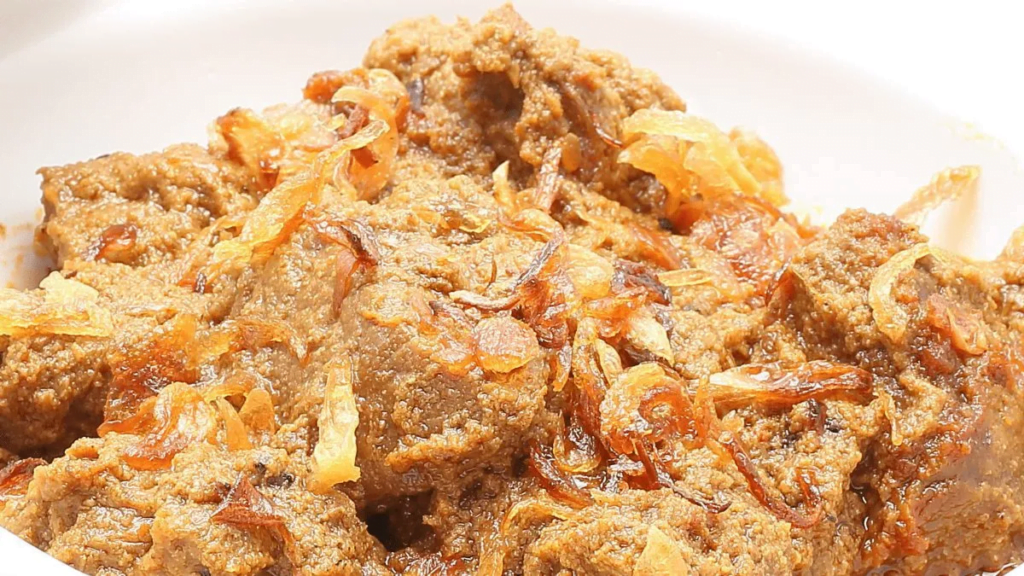

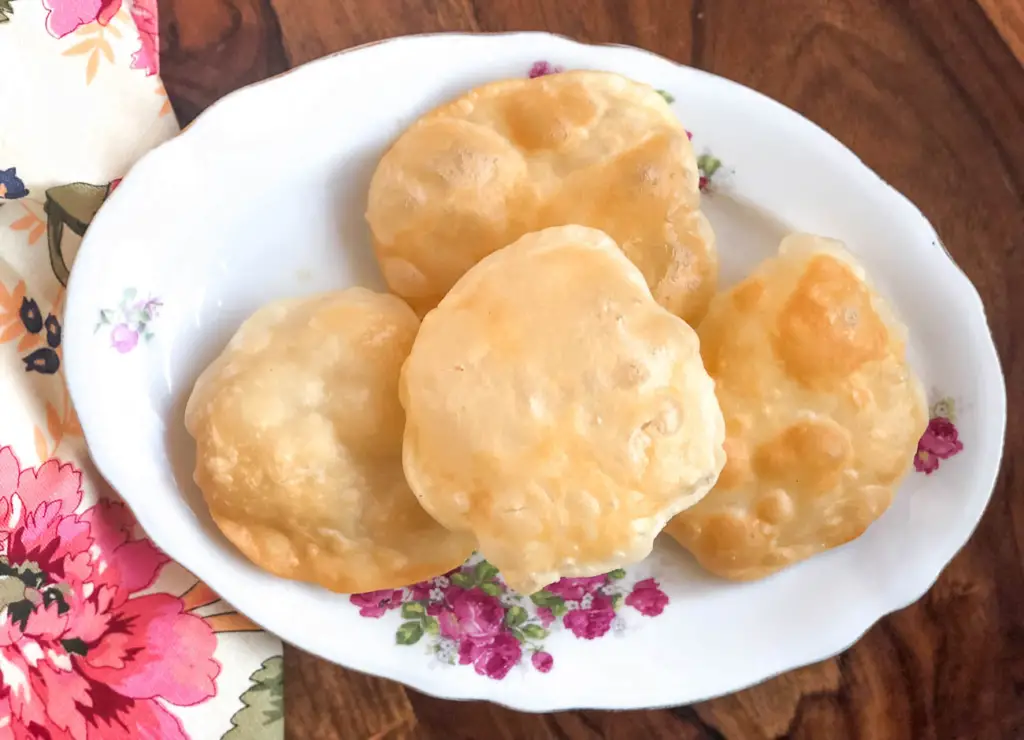





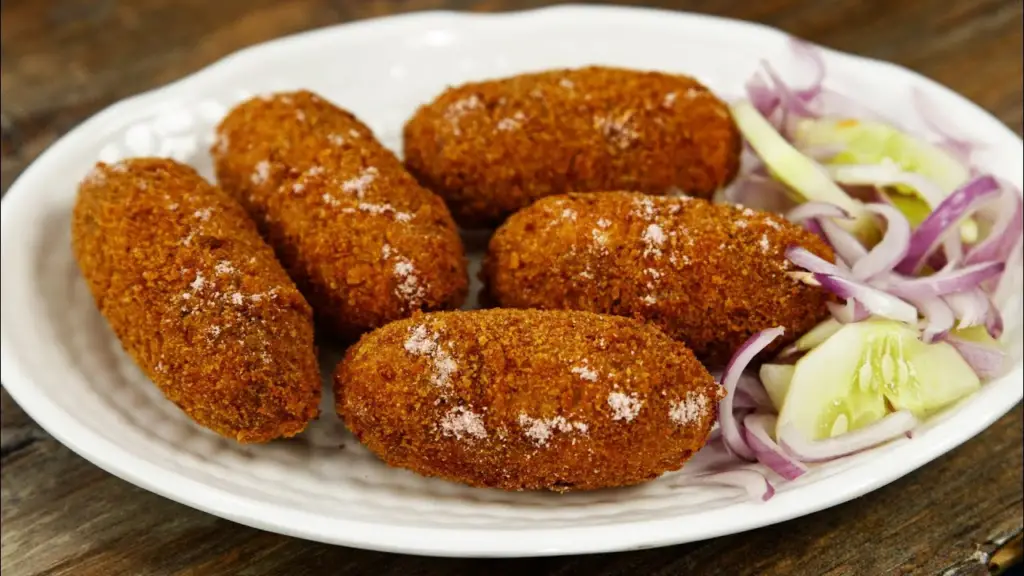






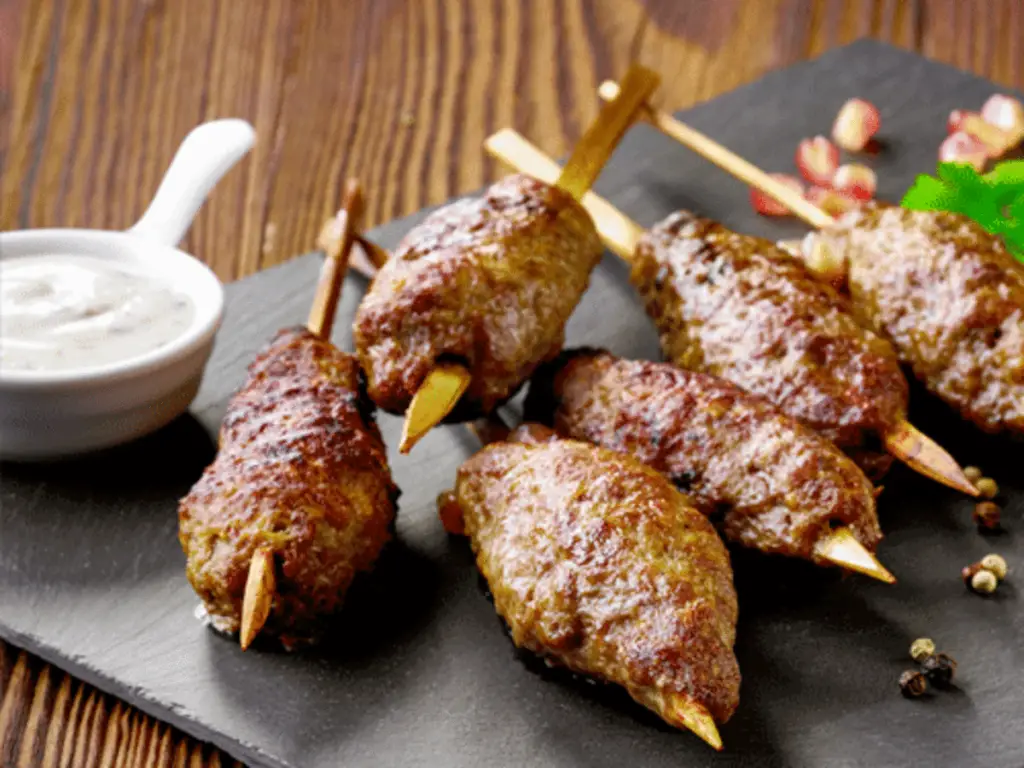



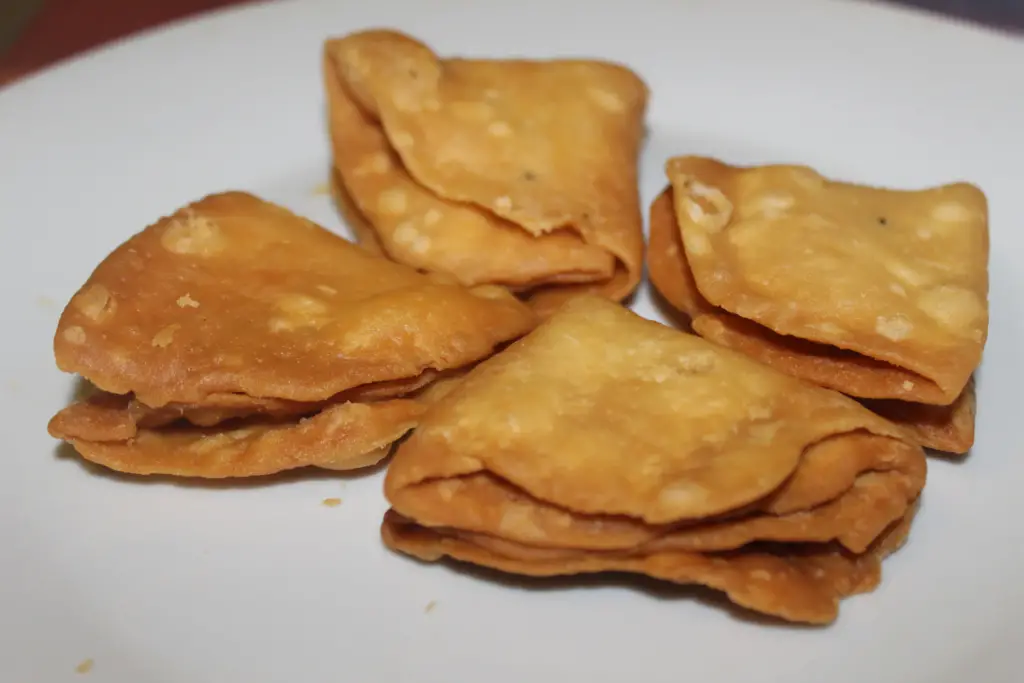
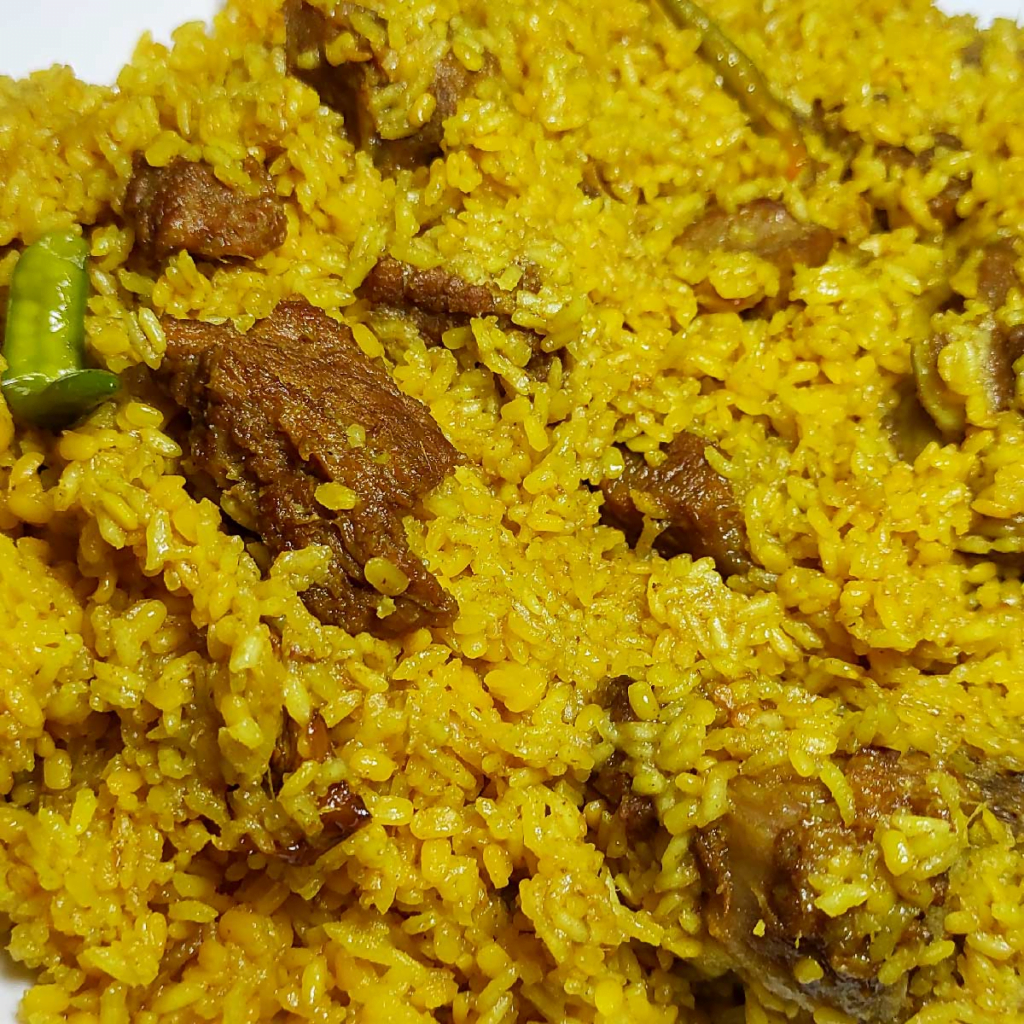



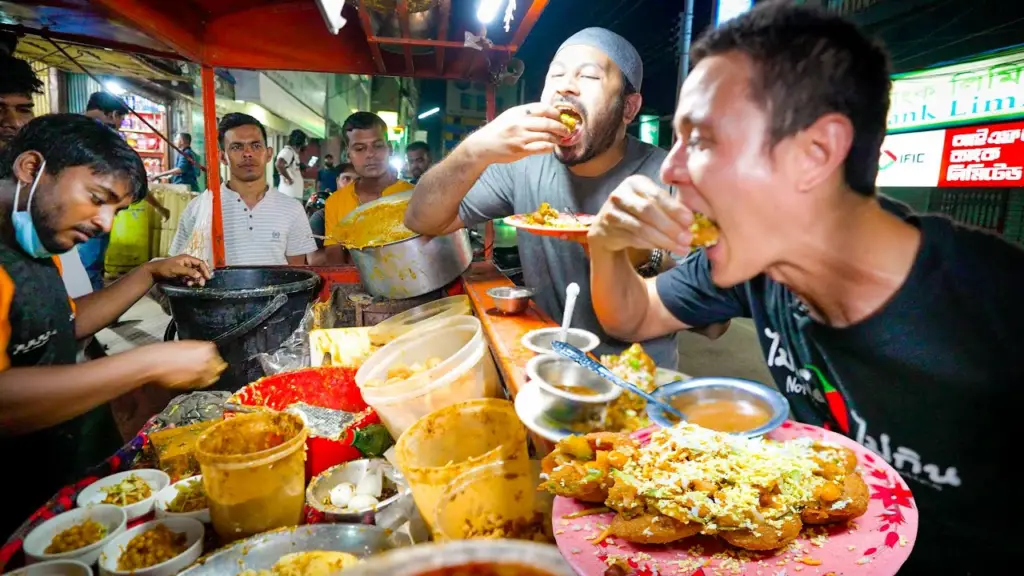


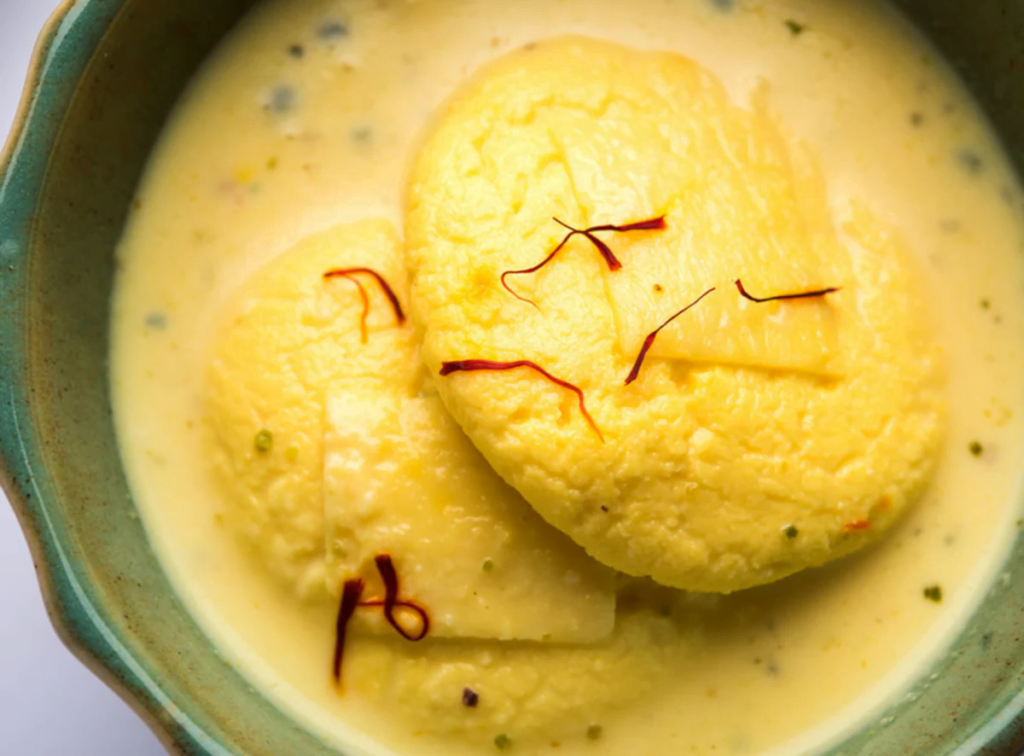
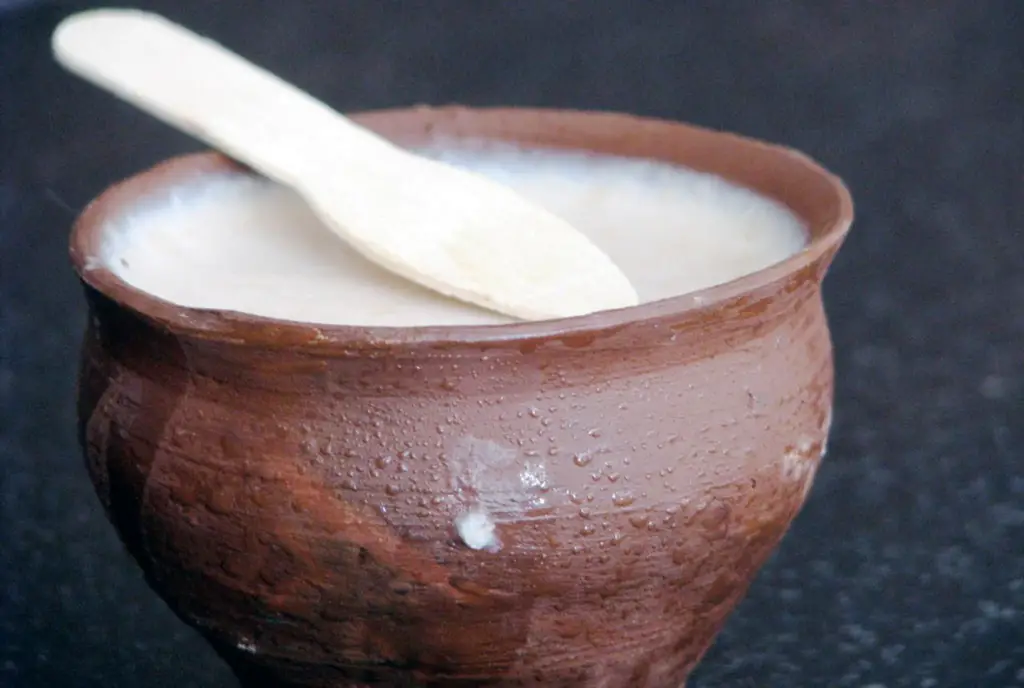

Bangladeshi History and Its Impact on Bangla Dishes
Bangladesh has a rich and diverse history, influenced by various cultures and religions, such as Buddhism, Hinduism, Islam, and British colonialism.
Bangla cuisine, also known as Bengali cuisine, is the culinary tradition of the Bengal region, which includes Bangladesh and the Indian state of West Bengal. It is characterized by the use of rice, fish, lentils, spices, and sweets.
The history of Bangladesh has had a significant impact on the development of Bangla cuisine. Some of the factors that shaped the cuisine are:
Fertile Delta Region
The abundance of fish and rice in the fertile delta region, which made them staple foods for the people.
The Mughal Empire
The Mughal Empire was an early modern empire in South Asia that ruled most of northern India from the early 16th to the mid-18th century.
It was founded by Babur, a descendant of Timur and Genghis Khan, in 1526 after he defeated the Sultan of Delhi, Ibrahim Lodi, in the First Battle of Panipat. The empire reached its peak under Akbar and Aurangzeb, who expanded its territory and promoted religious tolerance and cultural diversity.
The empire declined after the death of Aurangzeb in 1707 and was formally dissolved by the British Raj in 1858 after the Indian Rebellion of 1857.
The influence of the Mughal Empire, which introduced Persian and Central Asian elements, such as meat dishes, biryanis, kebabs, kormas, and rich gravies.
The British Raj
The British Raj was the period of British rule on the Indian subcontinent between 1858 and 1947. Bangladesh, which was then known as East Bengal or East Pakistan, was part of the British Raj until 1947, when it became part of the newly created Pakistan.
The influence of the British Raj, which brought European and Anglo-Indian influences, such as tea, breads, cakes, pastries, and snacks.
Hindu and Muslim communities
The influence of the Hindu and Muslim communities, which created distinct variations in the cuisine, such as vegetarian and non-vegetarian dishes, halal and haram foods, and different festivals and rituals.
The influence of the regional diversity, which resulted in different styles and specialties of the cuisine, such as Dhaka, Chittagong, Sylhet, and Rangpur.
Bangla cuisine is a reflection of the history, culture, and identity of the people of Bangladesh. It is a cuisine that celebrates diversity, creativity, and harmony.
I hope you enjoyed learning about the history of Bangladesh and the impact it has had on Bangla cuisine. If you want to try some of the dishes, you can check out these recipes:
Climate and Geography’s Influence on Bangla dishes
Bangladesh has a tropical monsoon climate, with high temperatures, humidity, and rainfall. The country is prone to natural disasters such as floods, cyclones, and tidal bores.
Bangla cuisine, also known as Bengali cuisine, is the culinary tradition of the Bengal region, which includes Bangladesh and the Indian state of West Bengal. It is characterized by the use of rice, fish, lentils, spices, and sweets.
The climate and geography of Bangladesh have had a significant impact on the development of Bangla cuisine. Some of the factors are:
- The abundance of fish and rice in the fertile delta region, which made them staple foods for the people.
- The influence of the Mughal Empire, which introduced Persian and Central Asian elements, such as meat dishes, biryanis, kebabs, kormas, and rich gravies.
- The influence of the British Raj, which brought European and Anglo-Indian influences, such as tea, breads, cakes, pastries, and snacks.
- The influence of the Hindu and Muslim communities, which created distinct variations in the cuisine, such as vegetarian and non-vegetarian dishes, halal and haram foods, and different festivals and rituals.
- The influence of the regional diversity, which resulted in different styles and specialties of the cuisine, such as Dhaka, Chittagong, Sylhet, and Rangpur.
Bangla cuisine is a reflection of the history, culture, and identity of the people of Bangladesh. It is a cuisine that celebrates diversity, creativity, and harmony.
Understanding the Essence of Bangla dishes
Bangladeshi cuisine, a harmonious blend of flavors, represents more than just a collection of recipes. It embodies the country’s history, culture, and the warmth of its people. The essence lies in the meticulous use of spices, the celebration of seasonal ingredients, and the communal aspect of shared meals.
From the celebratory Morog Polao to the comforting Vuna Khichuri, each dish tells a story, inviting everyone to partake in the rich tapestry of Bangladeshi culinary traditions.
Bangladeshi Traditional Food
Bangladeshi Traditional Food is deeply rooted in communal gatherings and celebrations. The preparation of dishes like Panta Ilish during Pohela Boishakh fosters a sense of community and tradition.
The slow-cooking techniques observed in Kala Bhuna and Haleem reflect the patience and dedication embedded in Bangladeshi cooking. These traditions, passed down through generations, create a culinary heritage that binds families and communities together, turning every meal into a shared experience.
Health Implications of Bangladeshi Cuisine
Bangladeshi cuisine, also known as Bengali cuisine, is the culinary tradition of the Bengal region, which includes Bangladesh and the Indian state of West Bengal. It is characterized by the use of rice, fish, lentils, spices, and sweets.
Bangladeshi cuisine has both positive and negative health implications for the population.
Some of the benefits are:
- The consumption of fish, which is rich in protein, omega-3 fatty acids, and micronutrients, can prevent or reduce the risk of cardiovascular diseases, malnutrition, anemia, and cognitive impairment
- The consumption of lentils, which are high in fiber, protein, and iron, can lower blood cholesterol, improve blood sugar levels, and prevent or treat iron deficiency anemia.
- The consumption of spices, such as turmeric, ginger, garlic, and chili, which have anti-inflammatory, antioxidant, and antimicrobial properties, can boost immunity, fight infections, and prevent or treat various chronic diseases, such as cancer, diabetes, and arthritis..
Some of the drawbacks are:
- The consumption of excessive amounts of rice, which is high in carbohydrates and low in fiber, can increase blood glucose levels, leading to obesity, diabetes, and metabolic syndrome.
- The consumption of excessive amounts of sweets, which are high in sugar and fat, can also increase blood glucose levels, as well as blood cholesterol and triglycerides, leading to obesity, diabetes, and cardiovascular diseases.
- The consumption of unsafe or adulterated food, which is a common problem in Bangladesh, can cause food poisoning, food-borne diseases, and chronic toxicity, affecting the health and nutrition of the population.
References
- Nutrition and Food Security in Bangladesh – Oxford Academic
- Fish consumption and cardiovascular disease risk reduction in Bangladesh
- Fish consumption and cognitive function among older adults in rural Bangladesh
- Food Safety and Challenges for Public Health: Bangladesh Perspective
- (PDF) Food safety and public health issues in Bangladesh
Bangladeshi National Dish
The quintessential Bangladeshi national dish is Biriyani. This flavorful and aromatic rice dish, often prepared with fragrant basmati rice and tender meat, symbolizes the grandeur of Bangladeshi cuisine.
The Mughal-inspired preparation, with its intricate layering of spices and slow-cooked meat, encapsulates the essence of festive celebrations and special occasions.
Exploring Bangladeshi Ingredients: The Flavors of Bangladeshi Cuisine
Bangladeshi cuisine’s distinct flavors stem from a variety of locally sourced ingredients. The aromatic spices, such as cumin, coriander, and turmeric, infuse depth into dishes like Morog Polao. Fresh herbs like coriander and mint add a burst of freshness to grilled chicken and naan roti.
Seafood, including Hilsa fish and prawns, reflects the coastal influence on the cuisine. The unique combination of mustard oil, green chilies, and garlic enhances the boldness of flavors in many traditional recipes.
Understanding these ingredients is key to unlocking the true essence of Bangla dishes, offering a sensory journey through the diverse and vibrant flavors of the land of rivers.
Typical Bangladeshi Food
In the kitchens of Bangladesh, a symphony of spices dances with flavors that tell tales of centuries past. Typical Bangladeshi food is a celebration of diversity, blending the subtleties of Mughlai cuisine with the robustness of Bengali flavors. At the heart of every meal is rice, a staple that anchors dishes like biryani, where fragrant basmati mingles with tender meat, and khichuri, a comforting medley of rice and lentils.
Fish, an essential element, finds its way into countless dishes, from the fiery ilish bhapa to the delicate panta bhat served during the Bengali New Year. Vegetarian delights like shorshe bhorta and alu posto showcase the mastery of spices, while street-side stalls offer delights such as fuchka and kathi rolls.
As meals conclude with a sweet touch, be it with roshogolla or misti doi, typical Bangladeshi food is a journey through a tapestry of flavors, a testament to a culture that embraces the richness of its culinary heritage.
Bangladeshi Sweets

In the heart of Bangladesh, the air is infused with the sweet melodies of traditional music, echoing the essence of a culture that takes pride in its culinary treasures. Bangladeshi sweets, known as “mishti,” are not just confections; they are an integral part of celebrations, ceremonies, and daily life. The vibrant array of sweets reflects the country’s rich history and diverse influences.
From the velvety texture of roshogolla to the aromatic allure of chomchom, each sweet narrates a story of craftsmanship and tradition. Intricately prepared with a blend of indigenous ingredients like jaggery, molasses, and paneer, Bangladeshi sweets are a testament to the nation’s culinary ingenuity. Families gather around plates laden with sandesh and pati shapta during festivals, creating bonds as sweet as the treats themselves.
In Bangladeshi culture, sharing mishti transcends mere indulgence; it signifies the sweetness of togetherness, making every bite a celebration of heritage and unity.
Bangladeshi Food – Great Recipes to Try at Home
Bangladeshi cuisine is a delightful adventure for the palate, with each dish offering a glimpse into the nation’s culture and traditions.
The typical Bangladeshi meal is hearty, flavored with spices and aromatics, and centered around a starch base with a savory sauce or stew.
Bangladesh Food – Chittagong

History and Background of Chittagong Cuisine in Bangladesh
Chittagong, a vibrant coastal city in Bangladesh, boasts a culinary heritage deeply influenced by its maritime location. The cuisine of Chittagong reflects a rich blend of flavors, incorporating fresh seafood, aromatic spices, and traditional cooking techniques. With its unique cultural history and proximity to the Bay of Bengal, Chittagong’s culinary offerings are a celebration of the region’s diversity and coastal abundance.
Ingredients for Chittagong Dish
- 500g fresh prawns, peeled and deveined
- 2 cups basmati rice
- 1 cup coconut milk
- 1 large onion, finely chopped
- 2 tomatoes, diced
- 1/4 cup mustard oil
- 1 teaspoon turmeric powder
- 1 teaspoon red chili powder
- 1 teaspoon cumin powder
- 1 teaspoon coriander powder
- Salt to taste
- Fresh coriander leaves for garnish
Recipe for Chittagong Dish
1. Marinate the Prawns
- In a bowl, mix prawns with turmeric powder, red chili powder, cumin powder, and salt.
- Allow them to marinate for at least 20 minutes.
2. Rinse and Soak Rice
- Rinse basmati rice under cold water until the water runs clear.
- Soak the rice in water for about 30 minutes.
3. Cook the Rice
- In a pot, bring 4 cups of water to a boil.
- Add soaked rice and cook until it’s 70% done. Drain excess water.
4. Saute Onions and Tomatoes
- Heat mustard oil in a pan. Add chopped onions and sauté until golden brown.
- Add diced tomatoes and cook until they are softened.
5. Add Prawns and Coconut Milk
- Incorporate the marinated prawns into the pan. Cook until they turn pink and opaque.
- Pour in coconut milk and simmer until the prawns are fully cooked.
6. Layer Rice and Prawn Mixture
- In a separate pot, layer the partially cooked rice and prawn mixture.
- Repeat the layers, finishing with a layer of rice on top.
7. Dum Cooking
- Cover the pot tightly and cook on low heat for 20-25 minutes until the rice is fully cooked.
8. Garnish and Serve
- Garnish the Chittagong Dish with fresh coriander leaves.
- Serve hot and enjoy the coastal flavors of Chittagong.
Serving Size, Cooking Time, and Nutritional Information
- Serving Size: Approximately 4 people
- Cooking Time: Approximately 1 hour
- Calories: The estimated calorie count for the Chittagong Dish is 350 calories per serving. (Note: Nutritional information may vary based on specific ingredients and portion sizes.)
Bangladesh Food – Sylhet

History and Background of Sylhet Cuisine in Bangladesh
Sylhet, a picturesque region in northeastern Bangladesh, is renowned for its lush landscapes and distinctive culinary traditions. The cuisine of Sylhet reflects a harmonious blend of flavors, drawing influence from the region’s agricultural abundance and cultural diversity. With a history shaped by trade routes and local agriculture, Sylhet’s culinary offerings showcase a unique array of spices, herbs, and locally grown ingredients.
Ingredients for Sylheti Dish
- 500g hilsa fish, cleaned and sliced
- 2 cups mustard oil
- 1 cup yogurt
- 1 tablespoon mustard paste
- 1 tablespoon poppy seed paste
- 1 teaspoon turmeric powder
- 1 teaspoon red chili powder
- 1 teaspoon cumin powder
- 1 teaspoon coriander powder
- 1 teaspoon sugar
- Salt to taste
- Fresh cilantro for garnish
Recipe for Sylheti Dish
1. Marinate the Hilsa Fish
- In a bowl, marinate the sliced hilsa fish with turmeric powder, red chili powder, cumin powder, coriander powder, and salt.
- Allow it to marinate for at least 30 minutes.
2. Prepare Mustard and Poppy Seed Paste
- In a small bowl, mix mustard paste, poppy seed paste, and yogurt to create a smooth mixture.
3. Heat Mustard Oil
- Heat mustard oil in a pan until it starts to smoke. Allow it to cool slightly.
4. Fry the Fish
- Carefully place the marinated hilsa fish into the hot oil and fry until golden brown on both sides.
5. Add the Paste Mixture
- Reduce heat and slowly add the mustard-poppy seed-yogurt mixture to the pan. Stir gently to coat the fish evenly.
6. Simmer and Add Sugar
- Allow the mixture to simmer on low heat until the fish is fully cooked and the gravy thickens.
- Add sugar to balance the flavors.
7. Garnish and Serve
- Garnish the Sylheti Dish with fresh cilantro.
- Serve hot with steamed rice and enjoy the flavors of Sylhet.
Serving Size, Cooking Time, and Nutritional Information
- Serving Size: Approximately 4 people
- Cooking Time: Approximately 45 minutes
- Calories: The estimated calorie count for the Sylheti Dish is 300 calories per serving. (Note: Nutritional information may vary based on specific ingredients and portion sizes.)
Bangladesh Food – Rangpur

History and Background of Rangpur Cuisine in Bangladesh
Rangpur, a bustling city in northern Bangladesh, is not only known for its historical significance but also for its diverse culinary offerings. The cuisine of Rangpur reflects a blend of traditional Bangladeshi flavors with a unique regional twist. Rich agricultural lands surround the city, influencing its food culture with fresh produce, aromatic spices, and a variety of locally sourced ingredients.
Ingredients for Rangpuri Dish
- 500g boneless chicken, cut into bite-sized pieces
- 2 cups basmati rice
- 1 cup plain yogurt
- 1 cup chopped tomatoes
- 1 cup thinly sliced onions
- 1/4 cup mustard oil
- 2 teaspoons ginger-garlic paste
- 1 teaspoon turmeric powder
- 1 teaspoon red chili powder
- 1 teaspoon cumin powder
- 1 teaspoon coriander powder
- 1 teaspoon garam masala
- Salt to taste
- Fresh mint leaves for garnish
Recipe for Rangpuri Dish
1. Marinate the Chicken
- In a bowl, mix chicken pieces with yogurt, ginger-garlic paste, turmeric powder, red chili powder, cumin powder, coriander powder, and salt.
- Allow the chicken to marinate for at least 30 minutes.
2. Rinse and Soak Rice
- Rinse basmati rice under cold water until the water runs clear.
- Soak the rice in water for about 30 minutes.
3. Sear Chicken
- Heat mustard oil in a pan. Add sliced onions and cook until golden brown.
- Add marinated chicken and sear until it’s browned on all sides.
4. Add Tomatoes and Rice
- Incorporate chopped tomatoes into the pan. Cook until they are soft.
- Drain the soaked rice and add it to the pan, stirring gently to mix with the chicken and tomatoes.
5. Cook the Dish
- Pour in enough water to cover the chicken and rice mixture.
- Sprinkle garam masala over the top and bring it to a boil.
- Reduce the heat, cover the pan, and let it simmer until the rice is fully cooked (approximately 20-25 minutes).
6. Garnish and Serve
- Garnish the Rangpuri Dish with fresh mint leaves.
- Serve hot and savor the unique flavors of Rangpur.
Serving Size, Cooking Time, and Nutritional Information
- Serving Size: Approximately 4 people
- Cooking Time: Approximately 45 minutes
- Calories: The estimated calorie count for the Rangpuri Dish is 400 calories per serving. (Note: Nutritional information may vary based on specific ingredients and portion sizes.)
Bangladesh Food – Mutton Dak Bungalow Curry (A traditional mutton curry made with yogurt, mustard, and spices)

History and Background of Mutton Dak Bungalow Curry in Bangladesh
Mutton Dak Bungalow Curry has its roots in the colonial-era “dak bungalows” or rest houses in British India. These bungalows served as stopping points for travelers, and the cooks there created this flavorful curry to satisfy diverse palates.
Originating from the blending of British and Indian culinary influences, this dish reflects a harmonious fusion that has become a classic in Bangladeshi cuisine.
Ingredients for Mutton Dak Bungalow Curry
- 1 kg mutton, cut into pieces
- 2 large onions, finely sliced
- 3 tomatoes, chopped
- 1/2 cup plain yogurt
- 4 tablespoons vegetable oil
- 1 tablespoon ginger-garlic paste
- 1 teaspoon turmeric powder
- 2 teaspoons red chili powder
- 1 teaspoon cumin powder
- 1 teaspoon coriander powder
- 1 teaspoon garam masala
- Salt to taste
- Fresh coriander leaves for garnish
Recipe for Mutton Dak Bungalow Curry
1. Marinate the Mutton
- In a bowl, mix mutton pieces with yogurt, ginger-garlic paste, turmeric powder, red chili powder, cumin powder, coriander powder, and salt.
- Allow it to marinate for at least 30 minutes.
2. Sear the Mutton
- Heat vegetable oil in a large pot over medium heat.
- Add sliced onions and sauté until golden brown.
- Add marinated mutton and sear until browned on all sides.
3. Cook the Curry
- Add chopped tomatoes to the pot and cook until they become soft.
- Pour in enough water to cover the mutton and bring it to a boil.
- Reduce the heat, cover the pot, and simmer until the mutton is tender (approximately 1.5 to 2 hours).
4. Garnish and Serve
- Sprinkle garam masala over the curry and stir.
- Garnish with fresh coriander leaves.
- Serve Mutton Dak Bungalow Curry hot with rice or naan.
Serving Size, Cooking Time, and Nutritional Information
- Serving Size: 6 people
- Cooking Time: Approximately 2 hours
- Calories: The estimated calorie count for Mutton Dak Bungalow Curry is 400 calories per serving. (Note: Nutritional information may vary based on specific ingredients and portion sizes.)
Bangladesh Food – Bangla Nimki (A crunchy and savory snack made with flour, cumin, and cloves)

History and Background of Bangla Nimki in Bangladesh
Bangla Nimki, a delightful and crispy snack, traces its roots to traditional Bangladeshi cuisine. Often enjoyed during festivals and special occasions, Nimki has become a beloved treat for its simplicity and deliciousness.
With a history deeply embedded in Bangladeshi culinary traditions, these savory bites showcase the region’s love for unique textures and flavors in snacks.
Ingredients for Bangla Nimki
- 2 cups all-purpose flour
- 1/4 cup semolina (sooji)
- 2 tablespoons ghee (clarified butter)
- 1 teaspoon salt
- 1/2 teaspoon nigella seeds (kalonji)
- Water (for kneading)
- Vegetable oil (for frying)
Recipe for Bangla Nimki
1. Prepare the Dough
- In a large mixing bowl, combine all-purpose flour, semolina, ghee, salt, and nigella seeds.
- Gradually add water and knead the ingredients to form a firm, smooth dough.
2. Rest the Dough
- Cover the dough with a damp cloth and let it rest for about 30 minutes.
3. Roll and Cut
- Divide the dough into small portions and roll each portion into a thin sheet.
- Use a knife or a Nimki cutter to cut the rolled dough into diamond or square shapes.
4. Heat the Oil
- In a deep frying pan, heat vegetable oil over medium heat.
5. Fry the Nimki
- Carefully place the cut Nimki pieces into the hot oil.
- Fry until they turn golden brown and crispy, flipping them occasionally for even cooking.
6. Drain and Cool
- Once fried, remove the Nimki from the oil and place them on paper towels to drain excess oil.
- Let them cool before serving.
Serving Size, Cooking Time, and Nutritional Information
- Serving Size: Approximately 4 people
- Cooking Time: Approximately 30 minutes
- Calories: The estimated calorie count for Bangla Nimki is 120 calories per serving. (Note: Nutritional information may vary based on specific ingredients and portion sizes.)
Bangladesh Food – Bengali Aloo Dum (A spicy and tangy potato curry made with tomatoes, yogurt, and garam masala)

History and Background of Bengali Aloo Dum in Bangladesh
Bengali Aloo Dum is a flavorful and spicy potato curry deeply rooted in the culinary traditions of Bangladesh.
This dish is a celebration of the region’s love for bold spices and rich flavors. Originating from Bengali kitchens, Aloo Dum showcases the creative use of local ingredients and a dedication to creating a satisfying and aromatic potato dish.
Ingredients for Bengali Aloo Dum
- 4 large potatoes, peeled and halved
- 2 tablespoons mustard oil
- 1 teaspoon cumin seeds
- 1 bay leaf
- 2 onions, finely chopped
- 2 tomatoes, pureed
- 1/2 cup yogurt
- 2 teaspoons ginger-garlic paste
- 1 teaspoon turmeric powder
- 1 teaspoon red chili powder
- 1 teaspoon cumin powder
- 1 teaspoon coriander powder
- Salt to taste
- Fresh coriander leaves for garnish
Recipe for Bengali Aloo Dum
1. Parboil the Potatoes
- Boil the halved potatoes until they are partially cooked. They should be firm but pierceable with a fork.
- Drain the water and set aside the parboiled potatoes.
2. Prepare the Spice Mix
- In a small bowl, mix turmeric powder, red chili powder, cumin powder, coriander powder, and salt.
- Create a paste by adding a little water to the spice mix.
3. Sear the Potatoes
- Heat mustard oil in a pan. Add cumin seeds and a bay leaf.
- Place the parboiled potatoes in the pan and sear until they develop a golden crust.
4. Cook the Onions and Tomatoes
- Add finely chopped onions to the pan and cook until they turn golden brown.
- Stir in ginger-garlic paste and cook for an additional minute.
- Pour in the tomato puree and cook until the oil separates from the mixture.
5. Add Spice Mix and Yogurt
- Mix in the prepared spice paste and cook for a few minutes.
- Whisk yogurt and add it to the pan, stirring continuously.
6. Simmer and Garnish
- Place the seared potatoes back into the pan. Cover and let it simmer until the potatoes are fully cooked.
- Garnish with fresh coriander leaves before serving.
Serving Size, Cooking Time, and Nutritional Information
- Serving Size: Approximately 4 people
- Cooking Time: Approximately 45 minutes
- Calories: The estimated calorie count for Bengali Aloo Dum is 250 calories per serving. (Note: Nutritional information may vary based on specific ingredients and portion sizes.)
Bangla dishes – Panta Ilish: A Traditional New Year Dish

Origins and History of Panta Ilish
- Panta Ilish is a Bengali New Year delicacy, symbolizing the beginning of the year with prosperity.
- Traditionally, it originated from the practice of soaking rice in water, and the inclusion of Hilsa fish signifies cultural richness.
Occasions:
- Served during Pohela Boishakh, the Bengali New Year, fostering a sense of community and tradition.
Bangla dishes – Panta Ilish: Ingredients and Recipe:
Ingredients:
- Hilsa fish, rice water (Panta), green chilies, mustard oil, onion, garlic, ginger, turmeric, salt.
Bangla dishes – Recipe:
- Marinate Hilsa with turmeric and salt.
- Ferment rice in water to make Panta.
- Mix marinated fish with Panta, onions, garlic, and ginger.
- Add mustard oil and green chilies.
- Ferment for a few hours before serving.
Presentation and Serving:
- Serve in traditional earthenware for authenticity.
- Garnish with fresh coriander and sliced green chilies.
Drink Pairing:
- Complement the dish with a glass of Borhani, a spicy yogurt drink, to balance the flavors.
Bangladeshi Food – Kacchi Biryani: Unveiling the Art of Marinated Rice and Meat

Origins and History of Kacchi Biryani
- Kacchi Biryani has Mughal roots, introduced during the Mughal era in Bengal.
- It gained popularity as a royal dish, showcasing the culinary finesse of the Mughal kitchen.
Occasions:
- Often served during weddings, celebrations, and special occasions, emphasizing its royal heritage.
Bangla dishes – Kacchi Biryani: Ingredients and Recipe
Ingredients
- Basmati rice, mutton, yogurt, ghee, saffron, spices.
Recipe
- Marinate mutton in yogurt and spices.
- Layer marinated meat and partially cooked rice.
- Add saffron-infused milk for aroma.
- Cook on low heat until meat is tender and rice is fluffy.
Presentation and Serving
- Serve in a traditional handi (pot) for an authentic touch.
- Garnish with fried onions and fresh mint.
Drink Pairing:
- Pair with a refreshing Sweet Lassi to balance the richness of the biryani.
Feel free to let me know if you’d like more details on any specific dish!
Bangladeshi Food – Vuna Khichuri/Khichuri: The Comforting Harmony of Rice and Lentils

Origins and History of Vuna Khichuri/Khichuri
- Vuna Khichuri is a comforting Bengali dish with roots in the simple, nutritious meals prepared in households over generations.
- Traditionally associated with monsoons, it provides warmth and sustenance during rainy days.
Occasions:
- Often served during rainy seasons and as a comfort food during festivals like Durga Puja.
Bangla dishes – Vuna Khichuri/Khichuri Ingredients and Recipe
Ingredients
- Rice,
- lentils,
- mixed vegetables,
- ghee
- spices.
Recipe
- Cook rice and lentils together.
- Sauté mixed vegetables in ghee.
- Mix vegetables with the cooked rice and lentils.
- Season with spices for a flavorful touch.
Presentation and Serving
- Serve in a bowl, garnished with fresh coriander.
- Accompany with a dollop of ghee on top for added richness.
Drink Pairing
- Pair with a steaming cup of Cha (tea) for a classic, comforting combination.
These dishes provide a glimpse into the rich and diverse culinary landscape of Bangladesh. Each dish carries not just flavors but a piece of the country’s history and culture. Feel free to ask for more details on other dishes!
Bangladeshi Food – Morog Polao: A Celebration Dish – Chicken Pilaf

Origins and History of Morog Polao
- Morog Polao is a celebratory dish with roots in Mughlai cuisine, symbolizing grand feasts during special occasions.
- Its inclusion of fragrant rice, spices, and succulent chicken reflects the opulence of Mughal-era culinary traditions.
Occasions
- Traditionally served during weddings, Eid celebrations, and other joyous occasions.
Bangla dishes – Morog Polao Ingredients and Recipe
Ingredients:
- Basmati rice
- chicken
- ghee
- aromatic spices
- saffron
- yogurt
Recipe
- Marinate chicken in yogurt and spices.
- Cook rice separately with aromatic spices.
- Layer the partially cooked rice with the marinated chicken.
- Garnish with saffron-infused milk and fried onions.
- Slow-cook until the chicken is tender, and rice is fragrant.
Presentation and Serving
- Serve in a large platter for a festive look.
- Garnish with fresh coriander and mint.
Drink Pairing
- Complement the richness of Morog Polao with a refreshing Borhani, a traditional spicy yogurt drink.
Bangladeshi Food – Grilled Chicken with Naan Roti: Fusion Delight in Every Bite

Origins and History of Grilled Chicken with Naan Roti
- Grilled Chicken with Naan Roti represents a fusion of traditional Bangladeshi flavors and global influences, reflecting the evolving culinary scene.
- The grilling technique likely draws inspiration from various international cuisines.
Occasions:
- Perfect for casual gatherings, family dinners, or anytime you crave a fusion treat.
Bangla dishes – Origins and History of Grilled Chicken with Naan Roti Ingredients and Recipe
Ingredients
- Chicken
- yogurt
- spices
- naan bread
Recipe
- Marinate chicken in yogurt and spices.
- Grill until golden and charred.
- Serve with freshly baked Naan Roti.
Presentation and Serving:
- Serve the grilled chicken on a platter with warm Naan Roti.
- Accompany with a side of mint chutney or yogurt sauce.
Drink Pairing:
- Pair this fusion delight with a classic Mango Lassi for a sweet and tangy contrast.
These dishes showcase the diversity and creativity within Bangladeshi cuisine. The flavors tell stories of cultural heritage and culinary innovation, making each dish a delightful experience.
Bangladeshi Food – Haleem: A Hearty Mix of Lentils and Meat

Origins and History of Haleem
- Haleem has ancient roots, believed to have been introduced in the Indian subcontinent by Arabian traders.
- Over time, it evolved into a nutritious and hearty dish blending various lentils, grains, and meat.
Occasions:
- Traditionally prepared during the holy month of Ramadan and enjoyed as a filling dish to break the fast.
Bangla dishes – Ingredients and Recipe:
Ingredients
- Lentils
- wheat
- barley
- meat (usually chicken or mutton)
- spices.
Recipe
- Slow-cook a mix of lentils, wheat, and barley.
- Simmer meat separately until tender.
- Combine the cooked meat and grains.
- Blend into a thick, hearty mixture.
- Garnish with fried onions, fresh coriander, and a drizzle of ghee.
Presentation and Serving:
- Serve in deep bowls, allowing the garnishes to create a colorful and inviting display.
- Accompany with naan or roti for a wholesome meal.
Drink Pairing:
- Complement the rich and spicy flavors of Haleem with a cooling glass of Mint Lemonade.
Bangladeshi Food – Seekh Kebab: Skewered Perfection of Minced Meat

Origins and History of Seekh Kebab
- Seekh Kebab has its roots in the Middle East and Central Asia, making its way to the Indian subcontinent through cultural exchanges.
- The word “seekh” refers to the skewers used for grilling.
Occasions:
- A popular choice for celebrations, gatherings, and street food indulgence.
Bangla dishes – Seekh Kebab Ingredients and Recipe
Ingredients:
- Minced meat (usually lamb or beef)
- spices
- herbs
Recipe
- Mix minced meat with spices and herbs.
- Thread the mixture onto skewers in cylindrical shapes.
- Grill until cooked, achieving a smoky flavor.
- Serve hot with mint chutney.
Presentation and Serving
- Arrange the skewers on a platter for a visually appealing presentation.
- Garnish with sliced onions and lemon wedges.
Drink Pairing:
- Accompany Seekh Kebab with a classic Masala Chai or a refreshing glass of Pomegranate Juice.
These dishes bring a delightful blend of flavors, history, and cultural significance to the Bangladeshi table. Feel free to inquire about more dishes or details!
Bangladeshi Food – Puchka: Exploring the Crunchy World of Bangladeshi Street Food

Origins and History of Puchka
- Puchka, also known as Golgappa or Pani Puri in other regions, has its roots in Indian street food culture.
- This beloved snack made its way to Bangladesh, capturing hearts with its burst of flavors.
Occasions
- A quintessential street food, Puchka is enjoyed anytime as a quick, flavorful snack.
Bangla dishes – Puchka Ingredients and Recipe
Ingredients
- Semolina balls (puris)
- mashed potatoes
- tamarind water
- spices.
Recipe
- Prepare small, hollow semolina balls.
- Fill with a mixture of mashed potatoes and spices.
- Dip in tangy tamarind water.
- Consume in a single, delightful bite.
Presentation and Serving:
- Serve Puchka on a traditional plate, ensuring each piece is filled to perfection.
- Devour immediately for the best experience.
Drink Pairing:
- Pair with a glass of Sweet Lassi to balance the tanginess of the tamarind water.
Bangladeshi Food – Rasgulla: Dive into the Syrupy Sweetness of Bengal

Origins and History of Rasgulla
- Rasgulla is a quintessential Bengali sweet with roots dating back centuries.
- It’s associated with various festivals and celebrations, showcasing the region’s love for sweets.
Occasions:
- Served during festivals like Durga Puja, weddings, and special occasions.
Bangla dishes – Rasgulla Ingredients and Recipe
Ingredients
- Paneer (Indian cottage cheese)
- sugar
- water
- cardamom.
Recipe
- Knead paneer into smooth balls.
- Cook in sugar syrup until they expand.
- Soak in a light sugar syrup flavored with cardamom.
Presentation and Serving
- Serve Rasgulla in a bowl, allowing the syrup to enhance its sweetness.
- Garnish with a sprinkle of chopped pistachios.
Drink Pairing:
- Enjoy Rasgulla with a cup of Saffron Chai for a warm and comforting pairing.
These delightful street food and dessert options provide a taste of the vibrant and diverse culinary scene in Bangladesh.
Bangladeshi Food – Mishti Doi (Yoghurt): Sweet Yogurt Bliss from Bangladesh

Origins and History of Mishti Doi (Yoghurt)
- Mishti Doi is a traditional Bengali sweet, showcasing the love for dairy in the region.
- Its origins trace back to the rich dairy culture of Bengal.
Occasions:
- Served during festivals, family celebrations, and as a sweet treat after meals.
Bangla dishes – Mishti Doi Ingredients and Recipe
Ingredients:
- Milk
- sugar
- yogurt culture.
Recipe
- Boil milk until it thickens.
- Add sugar and let it caramelize for a rich flavor.
- Allow the milk to cool and then mix with yogurt culture.
- Set it to ferment until it achieves the perfect balance of sweetness and tanginess.
Presentation and Serving:
- Serve Mishti Doi in earthenware pots for an authentic touch.
- Garnish with slivers of pistachios for added elegance.
Drink Pairing:
- Pair this sweet delight with a cup of Cardamom-infused Chai for a harmonious combination.
Bangladeshi Food – Ras Malai: Milk-Soaked Delight with a Cardamom Twist

Origins and History of Ras Malai
- Ras Malai is a decadent dessert with Mughal roots, showcasing the influence of Mughal cuisine in Bengal.
- It reflects the intricate dessert-making techniques of the Mughal era.
Occasions
- A favorite during festive occasions, weddings, and celebrations.
Bangla dishes – Ras Malai Ingredients and Recipe
Ingredients
- Paneer (Indian cottage cheese)
- milk
- sugar
- cardamom.
Recipe
- Knead paneer into flat discs.
- Cook in sweetened, cardamom-infused milk until soft.
- Garnish with pistachios or saffron strands.
Presentation and Serving:
- Serve Ras Malai in shallow bowls, ensuring it’s generously soaked in the flavored milk.
- Decorate with edible silver leaf for an added touch of opulence.
Drink Pairing:
- Pair Ras Malai with a cup of Saffron-infused Milk for a luxurious dessert experience.
These sweet delicacies provide a perfect ending to any Bangladeshi meal, embodying the region’s love for dairy and intricate dessert craftsmanship.
Bangladeshi Food – Borhani: The Spicy Yogurt Drink with a Kick

Origins and History of Borhani
- Borhani, a spicy yogurt-based drink, originated in the culinary heritage of Old Dhaka, Bangladesh.
- It has roots in the tradition of rich Mughlai cuisine, making it a flavorful and invigorating beverage.
Occasions:
- Borhani is often served during special occasions, weddings, and grand celebrations, adding a zing to the festivities.
Bangla dishes – Borhani Ingredients and Recipe
Ingredients:
- Yogurt
- mint
- ginger
- green chilies
- spices.
Recipe
- Blend yogurt with mint, ginger, and green chilies.
- Add a mix of spices for a bold flavor.
- Serve chilled, garnished with mint leaves.
Presentation and Serving:
- Serve Borhani in tall glasses to showcase its vibrant color.
- Garnish with a mint sprig for a refreshing touch.
Drink Pairing:
- Savor Borhani alongside a plate of Kacchi Biryani or Morog Polao for a delightful pairing, balancing the spices.
Bangladeshi Food – Jilapi: Spirals of Deep-Fried Sweet Goodness

Origins and History of Jilapi
- Jilapi, also known as Jalebi, has ancient origins, with variations found in many cultures.
- In Bangladesh, it’s a popular sweet enjoyed during festivals and special occasions.
Occasions
- Jilapi is a festive treat, commonly enjoyed during celebrations like weddings and Eid.
Bangla dishes – Jilapi Ingredients and Recipe
Ingredients:
- All-purpose flour
- sugar
- saffron
- cardamom.
Recipe
- Make a batter with flour, water, and a hint of saffron.
- Pipe the batter into spirals and deep-fry until golden.
- Soak the fried spirals in sugar syrup flavored with cardamom.
Presentation and Serving:
- Serve Jilapi piled on a plate or presented in swirls for an attractive display.
- Garnish with slivers of pistachios for a touch of elegance.
Drink Pairing:
- Enjoy Jilapi with a cup of Masala Chai to complement the sweetness with a hint of spice.
These flavorful drinks and sweets add a delightful touch to the Bangladeshi culinary experience. If you’re interested in more beverages or sweets, feel free to ask for additional insights!
Bangladeshi Food – Shingara and Samosa: Pastry Parcels Filled with Flavor

Origins and History of Shingara and Samosa
- Shingara and Samosa, deep-fried pastry parcels filled with savory goodness, have roots in Indian and Middle Eastern cuisines.
- Over time, they have become integral to Bangladeshi street food culture, offering a burst of flavors in every bite.
Occasions:
- These snacks are perfect for casual gatherings, tea-time, and as popular street food treats.
Bangla dishes – Shingara and Samosa Ingredients and Recipe
Ingredients
- Pastry sheets
- spiced filling (potatoes, peas, spices).
Recipe
- Prepare a spiced filling with potatoes, peas, and aromatic spices.
- Encase the filling in thin pastry sheets.
- Deep-fry until golden and crispy.
- Serve hot with chutney or sauce.
Presentation and Serving:
- Arrange Shingara and Samosa on a platter for easy sharing.
- Serve with mint chutney or tamarind sauce for dipping.
Drink Pairing:
- Enjoy these crispy delights with a cup of traditional Bangladeshi Cha (tea) for a perfect balance.
Bangladeshi Food – Pitha: Traditional Rice Cakes for Festive Feasts

Origins and History of Pitha
- Pitha, a diverse category of rice cakes, holds deep cultural significance in Bangladeshi cuisine, especially during winter festivals.
- The tradition of making Pitha is a celebration of local ingredients and community gatherings.
Occasions:
- Pitha-making is a communal activity during the winter months and is enjoyed during festivals like Pohela Boishakh.
Bangla dishes – Pitha Ingredients and Recipe
Ingredients:
- Rice flour
- jaggery
- coconut
- sesame seeds.
Recipe
- Mix rice flour with water to make a batter.
- Add jaggery, coconut, and sesame seeds to the batter.
- Shape the mixture into various forms and cook until done.
- Some Pitha are steamed, while others are fried or baked.
Presentation and Serving
- Display a variety of Pitha on a festive platter.
- Garnish with coconut flakes for a decorative touch.
Drink Pairing
- Enjoy Pitha with a cup of warm Milk Tea, enhancing the cozy and festive experience.
These savory and sweet treats showcase the diverse range of flavors and textures found in Bangladeshi snacks and traditional festival foods.
Bangladeshi Food – Kala Bhuna: Savory Delight in Slow-Cooked Beef

Origins and History of Kala Bhuna
- Kala Bhuna, a slow-cooked beef dish, has roots in the rich tradition of Bangladeshi home cooking, showcasing the use of aromatic spices.
- Its preparation involves a slow-cooking technique, allowing the flavors to meld beautifully.
Occasions:
- Kala Bhuna is often prepared for family gatherings, special occasions, and celebratory feasts.
Bangla dishes – Kala Bhuna Ingredients and Recipe
Ingredients
- Beef, spices (cumin, coriander, cardamom)
- onions
- garlic
- ginger.
Recipe
- Marinate beef in a blend of spices, onions, garlic, and ginger.
- Slow-cook until the meat is tender and infused with spices.
- Garnish with fresh coriander before serving.
Presentation and Serving:
- Serve Kala Bhuna in a traditional bowl or plate.
- Pair with steamed rice or flatbreads for a complete meal.
Drink Pairing:
- Complement the robust flavors of Kala Bhuna with a glass of Borhani, a spicy yogurt drink.
Bangladeshi Food – Prawn Malai Curry: Coastal Flavors in Creamy Coconut Curry

Origins and History of Prawn Malai Curry
- Prawn Malai Curry is a seafood delicacy that reflects the coastal influence in Bangladeshi cuisine.
- The use of coconut milk adds a rich and creamy dimension to the dish.
Occasions
- This dish is often savored during special gatherings, family celebrations, and coastal festivals.
Bangla dishes – Prawn Malai Curry Ingredients and Recipe
Ingredients
- Prawns
- coconut milk
- spices
- tomatoes
- mustard oil.
Recipe
- Cook prawns in a base of mustard oil and spices.
- Add coconut milk for creaminess.
- Simmer until the prawns are cooked and the curry is thickened.
Presentation and Serving
- Serve Prawn Malai Curry in a deep bowl to capture the flavors.
- Garnish with chopped cilantro for freshness.
Drink Pairing:
- Pair this seafood delight with a cool glass of Fresh Coconut Water for a refreshing contrast.
These meat and seafood dishes showcase the depth and variety within Bangladeshi cuisine, incorporating regional influences and culinary traditions.
Bangladeshi Food – Bharta: Savoring the Mashed Goodness of Vegetables

Origins and History of Bharta
- Bharta, a mashed vegetable dish, is deeply rooted in the agrarian tradition of Bangladesh, celebrating the bounty of fresh produce.
- The preparation involves roasting or grilling vegetables, enhancing their natural flavors.
Occasions:
- Bharta is a versatile dish enjoyed in everyday meals, festive feasts, and as a comforting side dish.
Bangla dishes – Bharta Ingredients and Recipe
Ingredients
- Eggplant
- tomatoes
- onions
- green chilies
- mustard oil
Recipe
- Roast or grill eggplant until the skin is charred.
- Mash the cooked eggplant and mix with chopped tomatoes, onions, and green chilies.
- Add mustard oil and season with salt.
Presentation and Serving:
- Serve Bharta in a traditional dish, highlighting the rustic charm.
- Accompany with rice or flatbreads for a wholesome meal.
Drink Pairing:
- Pair Bharta with a glass of Cha (tea) for a simple and comforting combination.
Bangladeshi Food – Mughlai Paratha: A Mughal-Inspired Stuffed Paratha

Origins and History Mughlai Paratha
- Mughlai Paratha is a stuffed flatbread inspired by the Mughal culinary tradition, showcasing the influence of historical interactions.
- The paratha is a flavorful blend of Mughal spices and traditional Bangladeshi techniques.
Occasions:
- Mughlai Paratha is often enjoyed during breakfast, brunch, or as a special treat during festive occasions.
Mughlai Paratha Ingredients and Recipe
Ingredients
- All-purpose flour
- minced meat (usually chicken or mutton)
- spices.
Recipe
- Prepare a dough with all-purpose flour.
- Stuff the paratha with spiced minced meat.
- Cook on a griddle until golden and crispy.
Presentation and Serving:
- Serve Mughlai Paratha with a dollop of yogurt or a side of chutney.
- Cut into wedges for easy sharing.
Drink Pairing:
- Enjoy Mughlai Paratha with a glass of refreshing Mango Lassi for a sweet and savory contrast.
These vegetable and stuffed bread dishes offer a glimpse into the variety and creativity in Bangladeshi cuisine. Whether enjoyed as a side or a main course, these dishes bring distinct flavors to the table.
Bangladeshi Food – Shemai: Vermicelli Sweetened to Perfection

Origins and History of Shemai
- Shemai, a sweet vermicelli dish, is a beloved dessert with roots in Bangladeshi and Indian traditions.
- It is often associated with celebrations and special occasions, especially during festive seasons.
Occasions
- Shemai is a popular choice for Eid celebrations, weddings, and other joyous events.
Bangla dishes – Shemai Ingredients and Recipe
Ingredients
- Vermicelli
- milk
- sugar
- ghee
- cardamom.
Recipe
- Roast vermicelli in ghee until golden.
- Boil in milk until the vermicelli is soft.
- Sweeten with sugar and flavor with cardamom.
- Garnish with nuts for added texture.
Presentation and Serving:
- Serve Shemai in individual bowls or a communal dish.
- Garnish with almonds and pistachios for an elegant touch.
Drink Pairing:
- Enjoy Shemai with a cup of Saffron-infused Chai for a warm and delightful pairing.
Bangladeshi Food – Porota: Flaky Layers of Joy in Every Bite

Origins and History of Porota
- Porota, a flaky, layered flatbread, has South Asian origins and has become an integral part of Bangladeshi cuisine.
- The technique of folding and rolling the dough creates its signature layers.
Occasions:
- Porota is enjoyed in various settings, from everyday meals to festive occasions.
Bangla dishes – Porota Ingredients and Recipe
Ingredients:
- All-purpose flour
- ghee
- water.
Recipe
- Knead the dough with ghee and water.
- Roll out the dough and fold to create layers.
- Cook on a griddle until golden and flaky.
Presentation and Serving:
- Serve Porota hot, allowing the layers to be appreciated.
- Pair with curries, chutneys, or yogurt for a fulfilling meal.
Drink Pairing:
- Enjoy Porota with a tall glass of Sweet Lassi for a delightful contrast.
These dessert and bread options bring a sweet and savory balance to the Bangladeshi culinary experience.
Bangladeshi Food – Chop: Crispy Fried Snacks with a Bangladeshi Twist

Origins and History of Chop
- Chop, a crispy fried snack, is a delightful fusion of traditional Bangladeshi flavors and deep-frying techniques.
- It has evolved as a popular street food, showcasing creativity in snack preparation.
Occasions:
- Chops are enjoyed as evening snacks, during festivals, and as a tasty bite on the go.
Bangla dishes – Chop Ingredients and Recipe
Ingredients:
- Minced meat (usually chicken or beef)
- potatoes
- spices
- breadcrumbs.
Recipe
- Cook minced meat with spices and mashed potatoes.
- Shape into cutlets, coat with breadcrumbs.
- Deep-fry until golden and crispy.
Presentation and Serving:
- Serve Chop on a platter with a side of mint chutney.
- Garnish with fresh coriander for a burst of color.
Drink Pairing:
- Pair Chop with a glass of Iced Lemon Tea for a refreshing and zesty combination.
Bangladeshi Food – Jhalmuri: The Spicy and Tangy Puffed Rice Snack

Origins and History of Jhalmuri
- Jhalmuri, a spicy and tangy puffed rice snack, is a popular street food deeply rooted in Bangladeshi culinary culture.
- It represents the vibrant flavors found in street snacks across the country.
Occasions:
- Jhalmuri is a go-to snack for casual outings, picnics, and social gatherings.
Bangla dishes – Jhalmuri Ingredients and Recipe
Ingredients
- Puffed rice
- peanuts
- spices
- mustard oil
- green chilies.
Recipe
- Mix puffed rice with roasted peanuts, spices, and chopped vegetables.
- Drizzle with mustard oil and toss to combine.
- Garnish with fresh coriander and green chilies.
Presentation and Serving
- Serve Jhalmuri in paper cones or small cups for a portable snack.
- Squeeze a bit of lemon for an extra zing.
Drink Pairing:
- Enjoy Jhalmuri with a cup of Masala Chai or a refreshing Mint Lemonade for a perfect street food experience.
These crispy and spicy snacks provide a delightful contrast to the savory and sweet dishes in Bangladeshi cuisine. Whether you’re looking for a quick bite or planning a casual get-together, these snacks are sure to please the taste buds.
Bangladeshi Dessert – Luchi: Deep-Fried Puffed Bread for Special Occasions

Origins and History of Luchi
- Luchi, deep-fried puffed bread, is a culinary treasure in Bangladeshi cuisine, often reserved for special occasions and celebrations.
- The technique of frying unleavened dough creates a light and fluffy texture.
Occasions
- Luchi is a festive treat, enjoyed during weddings, religious ceremonies, and special feasts.
Bangla dishes – Luchi Ingredients and Recipe
Ingredients:
- All-purpose flour
- water
- ghee.
Recipe
- Knead a soft dough with all-purpose flour and water.
- Divide the dough into small balls and roll them out.
- Deep-fry until they puff up, achieving a golden color.
Presentation and Serving:
- Serve Luchi on a festive platter, showcasing their airy texture.
- Pair with a rich curry or sweet condiments for a delightful combination.
Drink Pairing:
- Enjoy Luchi with a cup of traditional Sweet Lassi or Masala Chai to balance the flavors.
Bangladeshi Dessert – Falooda: A Dessert Drink Adventure with Noodles and Ice Cream

Origins and History of Falooda
- Falooda, a dessert drink adventure, combines the rich traditions of Persian and Indian desserts with a Bangladeshi twist.
- It has become a popular and refreshing treat on hot summer days.
Occasions:
- Falooda is enjoyed as a dessert, a sweet break, or as a delightful conclusion to a meal.
Bangla dishes – Falooda Ingredients and Recipe
Ingredients
- Falooda noodles
- rose syrup
- milk
- basil seeds
- ice cream.
Recipe
- Boil and cool falooda noodles.
- Layer a glass with noodles, basil seeds, and rose syrup.
- Pour chilled milk over the layers.
- Top with a scoop of ice cream.
Presentation and Serving:
- Serve Falooda in tall glasses, showcasing the vibrant layers.
- Use long spoons to enjoy each layer of this delightful drink.
Drink Pairing:
- Pair Falooda with a cup of Rose Chai for a floral and indulgent experience.
These special treats add a touch of elegance and indulgence to the Bangladeshi culinary journey. Whether you’re celebrating or simply treating yourself, these dishes are sure to create memorable moments.
Conclusion
In conclusion, the culinary journey through the land of rivers, Bangladesh, unveils a rich tapestry of flavors, history, and cultural significance. From the spicy delights to the comforting traditional dishes and vibrant street food, Bangladeshi cuisine reflects the amalgamation of Middle Eastern, Indian, and Southeast Asian influences.
The careful use of aromatic spices, staple ingredients like rice, and the cultural significance of each dish contribute to a diverse and inviting culinary landscape.
Bangladeshi food goes beyond being a collection of recipes; it is a reflection of the country’s history, climate, and the warmth of its people. The fusion of traditional flavors with global influences showcases the evolving nature of the cuisine, making it a delightful adventure for the palate.
As you embark on your culinary exploration of Bangladesh, dive into the essence of each dish, understanding the cultural stories they tell. Whether you savor the national dish, Biryani, or indulge in the syrupy sweetness of Rasgulla, each bite is an invitation to connect with the heart of Bangladeshi traditions.
Frequently Asked Questions
Where is Bangladesh located?
- Bangladesh is a country located in South Asia, bordered by India to the west, north, and east, Myanmar (Burma) to the southeast, and the Bay of Bengal to the south.
What are some staple ingredients in Bangladeshi cuisine?
- Staple ingredients in Bangladeshi cuisine include rice, lentils, various spices like cumin, coriander, and turmeric, as well as a variety of meats, especially fish and seafood.
What is the significance of Panta Ilish in Bangladeshi culture?
- Panta Ilish is a Bengali New Year delicacy symbolizing prosperity. It involves marinating Hilsa fish with rice water and spices, fostering a sense of community and tradition during Pohela Boishakh.
How does the climate and geography of Bangladesh influence its cuisine?
- The tropical climate and fertile geography contribute to a diverse culinary landscape. Abundant rice production, showcased in dishes like Vuna Khichuri, reflects the agrarian nature of the country, while seasonal adaptations celebrate the monsoon through comforting dishes.
What is the health implication of Bangladeshi cuisine?
- While Bangladeshi cuisine is rich in flavors and offers nutritional benefits with diverse vegetables, lentils, and spices, some dishes may be high in oil and ghee. A balanced approach, considering portion sizes and cooking methods, can lead to a fulfilling culinary experience without compromising health.
What is the national dish of Bangladesh?
- The quintessential Bangladeshi national dish is Biryani. This flavorful and aromatic rice dish, often prepared with fragrant basmati rice and tender meat, symbolizes the grandeur of Bangladeshi cuisine.
How do Bangladeshi culinary traditions emphasize communal gatherings?
- Bangladeshi culinary traditions, seen in dishes like Panta Ilish and slow-cooked preparations like Kala Bhuna and Haleem, are deeply rooted in communal gatherings. These traditions, passed down through generations, create a culinary heritage that binds families and communities together, turning every meal into a shared experience.

